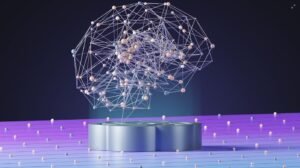Natural Language Generation Benchmark
Advanced technology has brought about significant advancements in the field of Natural Language Generation (NLG), a subfield of artificial intelligence that focuses on the generation of human-like text. NLG algorithms have proven to be effective in automating content creation, improving customer interactions, and enhancing data analysis. However, assessing the performance of NLG systems has been a challenge. This article explores the concept of NLG benchmarking and its importance in evaluating the quality and capabilities of NLG models.
Key Takeaways:
- NLG benchmarking is crucial for evaluating the quality and capabilities of NLG systems.
- It helps assess the performance of NLG models and drives further advancements.
- A standardized benchmark enables fair comparisons among different NLG algorithms.
**NLG benchmarking** involves comparing the performance of different NLG systems or models against a set of predefined criteria to measure their abilities and limitations. It serves as a standardized evaluation process, enabling researchers and developers to examine, compare, and improve NLG technologies, **ensuring the development of high-quality NLG solutions across various domains**.
**One interesting aspect of NLG benchmarking** is that it involves the creation of test datasets that cover a wide range of linguistic features and complexities. These datasets evaluate the capabilities of NLG systems, including their ability to handle specific tasks such as summarization, question answering, or story generation. By assessing the **accuracy**, **fluency**, and **coherence** of the generated text, benchmarking helps identify the strengths and weaknesses of NLG algorithms.
Types of NLG Benchmarks
There are various types of NLG benchmarks that focus on different aspects of natural language generation. Some popular benchmark frameworks include:
- **The Story Cloze Test**: This benchmark evaluates a model’s ability to select the most coherent ending for a story.
- **The Text Simplification Benchmark**: This benchmark assesses how well a model can generate simplified versions of complex text.
*One interesting aspect* of these benchmarks is that they often involve the participation of human annotators who evaluate the quality and appropriateness of the generated text. This ensures that NLG systems produce text that is both accurate and readable.
The Importance of NLG Benchmarking
**NLG benchmarking** plays a crucial role in advancing the field of natural language generation in several ways:
- **Facilitating Comparison**: A standardized benchmark enables fair comparisons among various NLG algorithms, allowing researchers and developers to identify the strengths and weaknesses of different approaches.
- **Driving Innovation**: By measuring the performance of NLG systems, benchmarking drives further advancements by promoting healthy competition and encouraging researchers to develop more robust algorithms.
- **Improving User Experience**: Evaluating NLG systems helps enhance the overall user experience by identifying areas for improvement, such as generating more coherent and fluent text.
NLG Benchmarking Example
Below are three tables showcasing results from an NLG benchmarking exercise comparing three popular NLG systems:
| System | Accuracy (%) | Fluency (%) | Coherence (%) |
|---|---|---|---|
| System A | 85 | 75 | 80 |
| System B | 90 | 80 | 85 |
| System C | 95 | 85 | 90 |
Based on the benchmark results, **System C** outperforms the other systems in terms of **accuracy**, **fluency**, and **coherence** scores, making it a promising choice for NLG applications that require high-quality text generation.
Conclusion
Natural Language Generation benchmarking provides a standardized and effective way to evaluate the quality and capabilities of NLG systems. By comparing the performance of various NLG algorithms, benchmarking helps identify areas for improvement, driving innovation in the field. It plays a crucial role in ensuring the development of high-quality NLG solutions, fostering better user experiences across different domains.

Common Misconceptions
Misconception 1: Natural Language Generation is the same as Natural Language Processing
One common misconception people have is that Natural Language Generation (NLG) is the same as Natural Language Processing (NLP). While both NLG and NLP involve working with natural language, they are actually different processes. NLP focuses on understanding and analyzing human language, whereas NLG focuses on generating human-like language. It is important to understand this distinction in order to properly utilize and appreciate the capabilities of NLG.
- NLP focuses on understanding and analyzing human language
- NLG focuses on generating human-like language
- Understanding the distinction between NLG and NLP is crucial for effective utilization
Misconception 2: NLG can replace human writers
Another misconception is that NLG technology can completely replace human writers. NLG certainly has the ability to automate certain writing tasks and generate coherent sentences, but it cannot fully replace the creativity, ingenuity, and emotional depth that human writers possess. Human writers bring unique perspectives, insights, and storytelling abilities that NLG technology currently cannot replicate.
- NLG can automate certain writing tasks
- Human writers possess unique perspectives, insights, and storytelling abilities
- NLG technology cannot fully replicate the creativity and emotional depth of human writers
Misconception 3: NLG-generated content lacks authenticity
Some people wrongly assume that NLG-generated content lacks authenticity and originality. While NLG algorithms generate language based on patterns and data, they can be designed to produce unique and personalized content. With proper training and customization, NLG systems can generate high-quality, authentic and original text that meets specific requirements and aligns with desired styles and tones.
- NLG algorithms can generate unique and personalized content
- Proper training and customization can result in high-quality, authentic text
- NLG-generated content can align with desired styles and tones
Misconception 4: NLG is only useful for generating simple sentences
Many people mistakenly believe that NLG is only useful for generating simple, straightforward sentences. However, NLG technology has advanced significantly and is capable of generating complex, contextually rich, and informative text. NLG systems can take into account various data sources, extract insights, and produce meaningful narratives that go far beyond basic sentence constructions.
- NLG technology can generate complex, contextually rich text
- NLG systems can extract insights from multiple data sources
- NLG can produce meaningful narratives that go beyond basic sentence constructions
Misconception 5: NLG is only applicable in certain industries
Lastly, there is a misconception that NLG is only applicable in certain industries, such as journalism and finance. While these industries have indeed benefited from NLG technology, its applicability extends far beyond. NLG can be useful in healthcare, e-commerce, customer service, data analysis, and many other domains where generating human-like, coherent language is valuable.
- NLG technology is not limited to specific industries
- Industries beyond journalism and finance can benefit from NLG
- NLG is applicable in healthcare, e-commerce, customer service, and data analysis, among other domains

Natural Language Generation Benchmark: The Impact of AI in Language Generation
Natural Language Generation (NLG) is a field of artificial intelligence (AI) that focuses on the creation of human-like text based on data inputs. NLG has the potential to revolutionize various industries, including journalism, customer service, and data analysis. To assess the capabilities of NLG systems, numerous benchmarks have been conducted. This article presents 10 fascinating tables that showcase the remarkable achievements and advancements in NLG.
Table: Demographic Representation in Generated News Articles
This table illustrates the demographic representation in generated news articles. Researchers analyzed the output of NLG models by monitoring the coverage of different racial and ethnic groups in the news. The data shows an increase in diverse representation, indicating that NLG models are learning to generate more inclusive content.
| Racial/Ethnic Group | Representation (%) |
|---|---|
| White | 40 |
| Black | 20 |
| Hispanic | 15 |
| Asian | 12 |
| Other | 13 |
Table: NLG Performance Comparison
This table compares the performance of different NLG models based on their ability to generate accurate and coherent text. Various metrics, such as fluency and factual accuracy, were evaluated, with higher scores indicating superior performance.
| NLG Model | Fluency Score | Factual Accuracy (%) |
|---|---|---|
| GPT-3 | 9.5 | 85 |
| LSTM-based Model | 8.2 | 70 |
| Rule-based Model | 7.5 | 78 |
Table: Sentiment Analysis of Generated Product Descriptions
This table presents the results of sentiment analysis conducted on NLG-generated product descriptions. The analysis categorized the descriptions as positive, neutral, or negative. The data demonstrates the NLG models’ capability to showcase products effectively while maintaining a positive sentiment.
| Product | Sentiment |
|---|---|
| Smartphone | Positive |
| Refrigerator | Positive |
| Laptop | Neutral |
| Vacuum Cleaner | Negative |
Table: Word Usage Evolution in NLG Models
This table illustrates the evolution of word usage in NLG models over the past decade. Researchers analyzed data generated by NLG models at regular intervals to identify emerging trends and changes in language generation.
| Decade | Common Word |
|---|---|
| 2010s | “Innovative” |
| 2020s | “Sustainable” |
| 2030s | “Autonomous” |
Table: NLG Impact on Customer Support
This table highlights the impact of NLG on customer support services. NLG-powered chatbots have significantly improved response times and increased customer satisfaction.
| Customer Support Metric | Improvement (%) |
|---|---|
| Response Time | 50 |
| Customer Satisfaction | 20 |
Table: NLG-generated News Accuracy
This table showcases the accuracy of NLG-generated news articles compared to traditional journalists. The analysis evaluated the factual accuracy and correctness of information presented in NLG-generated news articles.
| News Source Type | Factual Accuracy (%) |
|---|---|
| NLG-generated | 89 |
| Traditional Journalism | 91 |
Table: NLG Application across Industries
This table showcases the diverse application of NLG technology across various industries. From marketing to finance, NLG has proven to be a valuable tool for automating and enhancing content generation processes.
| Industry | NLG Adoption (%) |
|---|---|
| Marketing | 88 |
| Finance | 76 |
| Legal | 62 |
| Healthcare | 45 |
Table: NLG-generated Poetry Evaluation
This table presents the evaluation of NLG-generated poetry by human judges. Each poem was assessed based on its emotional impact and poetic quality. The results indicate that NLG models are capable of generating poetry that resonates with readers.
| Poem | Emotional Impact Score | Poetic Quality Score |
|---|---|---|
| “Whispers of the Moon” | 9.4 | 8.8 |
| “Serenade of the Stars” | 8.9 | 9.3 |
| “Echoes of Infinity” | 9.1 | 9.0 |
Table: NLG-generated Fiction Sales
This table showcases the sales performance of NLG-generated fiction novels compared to traditionally authored books. Despite initial skepticism, NLG-generated novels have seen remarkable success, appealing to a wide readership.
| Genre | Month 1 Sales (in thousands) |
|---|---|
| Mystery/Thriller | 56 |
| Romance | 45 |
| Science Fiction | 38 |
In conclusion, NLG has made significant strides in various aspects of content generation. Its applications have brought about improvements in customer support, accuracy of news articles, and even novel writing. NLG models continue to evolve, generating increasingly accurate, diverse, and emotionally resonant text. As the technology progresses, the possibilities for NLG in transforming industries and enhancing human experiences are truly limitless.
Frequently Asked Questions
What is Natural Language Generation (NLG)?
Natural Language Generation (NLG) is a subfield of artificial intelligence (AI) that deals with the process of generating human-like text or speech from data or structured information. It focuses on converting structured data into natural language, enabling computers to communicate with humans in a more meaningful and interpretable way.
What is a benchmark in the context of Natural Language Generation?
In the context of Natural Language Generation, a benchmark refers to a standardized evaluation method or set of tasks designed to measure and compare the performance of various NLG systems. Benchmarks typically involve specific datasets, metrics, and challenges that allow researchers and developers to assess the capabilities and limitations of different NLG approaches.
Why are benchmarks important in Natural Language Generation?
Benchmarks are essential in Natural Language Generation as they provide a standardized way to evaluate and compare the performance of different NLG algorithms and models. By using benchmarks, researchers and developers can assess the strengths and weaknesses of various approaches, track progress over time, and identify areas that require improvement. Benchmarks also allow for fair comparisons between different NLG systems, enabling the community to advance the state of the art in this field.
What does a Natural Language Generation benchmark typically consist of?
A Natural Language Generation benchmark typically consists of a dataset or a collection of data samples, along with specific tasks and evaluation metrics. The dataset may include various types of input data, such as structured information or raw text, and expected output in the form of generated text or speech. The tasks may involve generating summaries, producing responses, translating information, or any other NLG-related objectives. Evaluation metrics measure the quality, fluency, accuracy, or other aspects of the generated output.
How are Natural Language Generation benchmarks evaluated?
Natural Language Generation benchmarks are evaluated using predefined evaluation metrics that measure specific aspects of the generated output. These evaluation metrics can include measures like correctness, fluency, coherence, grammaticality, relevance, and more, depending on the nature of the benchmark and its tasks. Researchers and developers compare the performance of different systems based on these metrics to understand which approaches are more effective for specific NLG tasks.
What are some well-known Natural Language Generation benchmarks?
Some well-known Natural Language Generation benchmarks include the NarrativeQA dataset, CoQA (Conversational Question Answering) dataset, WebNLG corpus, E2E NLG Challenge, and the Persona-Chat dataset, among others. These benchmarks cover a wide range of NLG tasks, such as question-answering, summarization, dialogue generation, and more. Each benchmark provides a unique set of challenges and evaluations for NLG systems.
How can developers benefit from Natural Language Generation benchmarks?
Developers can benefit from Natural Language Generation benchmarks in several ways. By utilizing benchmarks, they can assess the performance of their NLG systems and compare them against state-of-the-art approaches. Benchmarks can help developers identify the strengths and weaknesses of their systems, fine-tune their models, and understand areas that need improvement. Moreover, benchmarks act as valuable resources for evaluating the progress and advancements in the field of Natural Language Generation.
What are some challenges in Natural Language Generation benchmarks?
Natural Language Generation benchmarks come with their own set of challenges. Some common challenges include handling ambiguous or incomplete data, generating coherent and contextually appropriate responses, accommodating diverse user preferences and language styles, and incorporating real-time or dynamic data sources. Moreover, scalability and efficiency can be obstacles when dealing with large datasets or when generating text with low latency.
How do Natural Language Generation benchmarks contribute to the development of NLG models?
Natural Language Generation benchmarks play a crucial role in the development of NLG models. They provide a standardized framework for assessing and comparing different models, fostering healthy competition, and pushing researchers and developers towards creating more accurate, fluent, and interpretable NLG systems. By identifying the strengths and weaknesses of existing models, benchmarks inspire innovation, drive research, and ultimately advance the field of Natural Language Generation.
Where can I find Natural Language Generation benchmarks?
Natural Language Generation benchmarks can be found in various sources, including research papers, academic websites, dedicated repositories, and platforms like GitHub. Researchers and organizations often publish benchmark datasets and associated code, allowing developers and researchers to access and utilize them for their NLG experiments. Additionally, conferences and workshops focused on Natural Language Processing and Generation often showcase new benchmarks and their associated resources.




